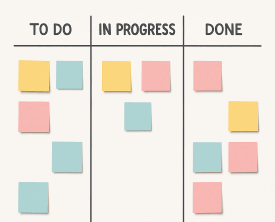How to choose the right business scheduling software
By Mark Ballance, Resource Scheduling Specialist at Schedule it Ltd since 2010.
 Scheduling software can have a hugely positive impact on your company's productivity. But how do you choose the right scheduling software? How do you decide which resource scheduling tool is best for your business? Do free scheduling apps do enough, or is it worth paying for resource management software? We’ve pulled together some top tips to help you choose the right scheduling software for you.
Scheduling software can have a hugely positive impact on your company's productivity. But how do you choose the right scheduling software? How do you decide which resource scheduling tool is best for your business? Do free scheduling apps do enough, or is it worth paying for resource management software? We’ve pulled together some top tips to help you choose the right scheduling software for you.What to look for when it comes to choosing scheduling software:
1. Ease of use
Learning to use a new piece of software isn’t always easy. So, spend time looking at different scheduling tools to see which seems the simplest to use. The easier the system is to use the more likely users are to adopt it. Many tools offer free trials so make the most of this offer. Try and see if you think the software will work for your team. Also, think about scalability. Can the software adapt to more people or tasks as your business grows? Is it flexible enough to schedule different types of tasks if your company expanded into a new area?2. Access on any device
Particularly if you have employees out on the road, a desktop-only scheduling tool is't going to work. Look for scheduling software that will work on the systems you currently use. Does your organization use Windows or Mac? Mobiles and laptops? iPhones or Samsung? Think about whether the software needs to integrate with other software tools you already use. Some scheduling software easily works with Outlook, Google Calendar, Salesforce, Slack and more.3. Reporting services
Scheduling software should help you schedule tasks and resources, but it needs to add value through reporting to. Can you quickly get reports on any of your resources or events? Can you customize these to your individual business needs for time-sheets, order forms, booking sheets, job cards etc? With increased pressure on scarce time and resources, you should easily be able to see utilization and other statistical information, that you can view online or export to other tools like Excel. Think about audit trails as well, so that you can always look back and see who did what, when.4. 5-star reviews
 Looking at reviews is a useful way of assessing whether a piece of software might be right for you. Remember that every company and industry has individual needs, so search for reviews from companies that are most similar to yours. If you are talking to a scheduling software company, ask them for examples of companies like yours that already use their software. Hearing first-hand about how the software has helped their business could help you make your decision. Independent review sites like G2 Crowd and Capterra can be very helpful. See comparisons between Schedule it and ResourceGuru and ScheduALL
Looking at reviews is a useful way of assessing whether a piece of software might be right for you. Remember that every company and industry has individual needs, so search for reviews from companies that are most similar to yours. If you are talking to a scheduling software company, ask them for examples of companies like yours that already use their software. Hearing first-hand about how the software has helped their business could help you make your decision. Independent review sites like G2 Crowd and Capterra can be very helpful. See comparisons between Schedule it and ResourceGuru and ScheduALL5. Ongoing support & customer service
Particularly if you are proposing to spend money on a paid-for scheduling tool, you want to ensure you get the right support. How can you ask the supplier for help if you need to? Do they offer training as part of a package and if so, how many users does this apply to? Do they have FAQs on their website? Can you call or live chat with someone to ask any questions you need to about your particular business?Thinking about these five factors should help you to evaluate scheduling software options and choose the one which you think will be best for your business.
Try Schedule it Free
No credit card required. Capterra/G2











